Potato knishes are traditional Jewish snacks made from potatoes, onions, and simple flour dough. These have a tender and garlicky filling encased with crispy dough. Knishes can be eaten as a snack or as a side dish. They can be eaten cold, but I like them best when they’re warm and fresh.
I’m helping you make them perfectly with whatever tools you have on hand, whether that’s a food mill or a wooden spoon. This recipe can be made with zero fancy equipment and produce tasty knishes.
Potato knishes are traditionally on the blander side, so I’m also sharing some spice combinations you can add to the filling if you’re not interested in the classic.
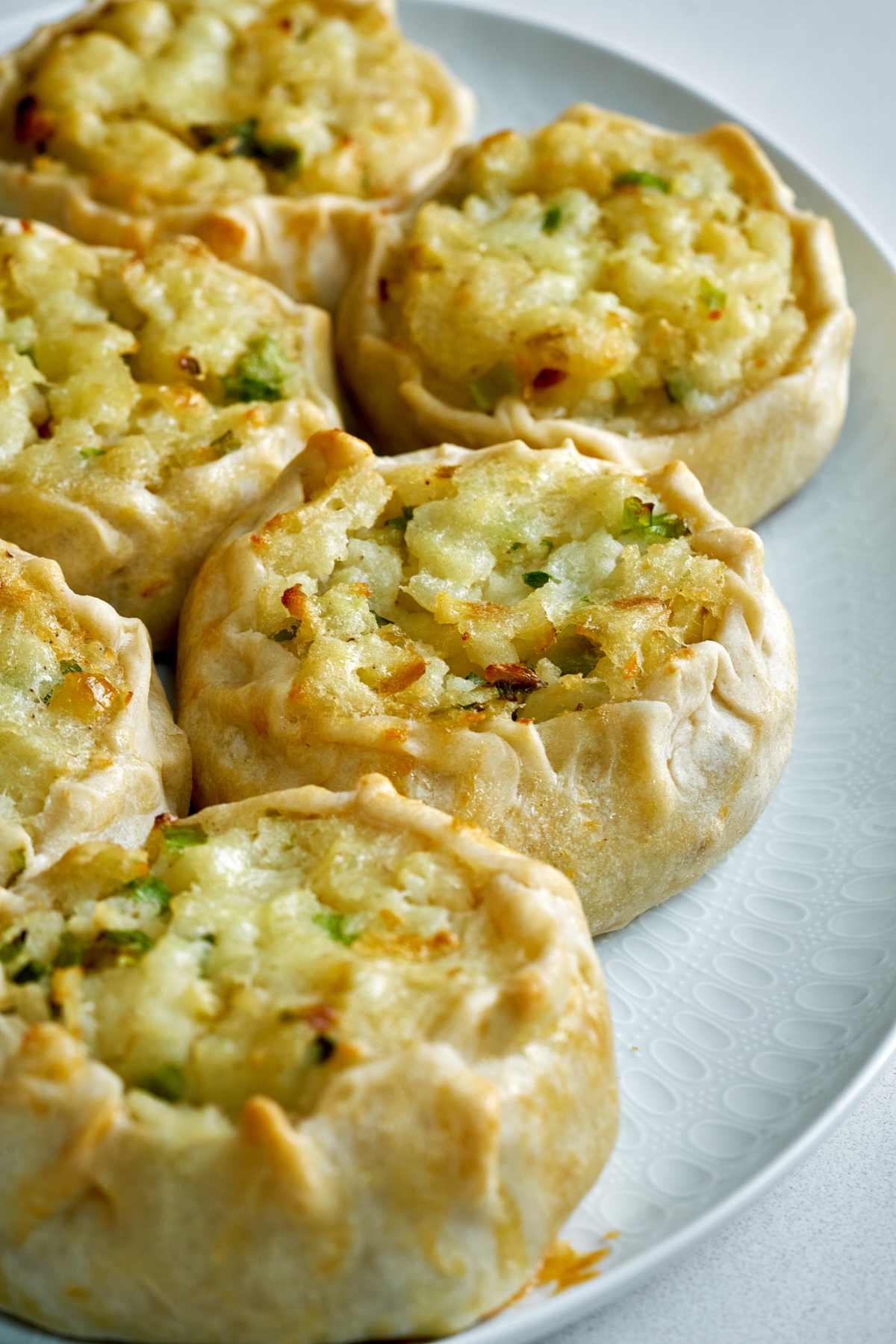
Knishes were created in Eastern European Ashkenazi-Jewish communities and were brought over to the United States by Jewish immigrants, and are now enjoyed all across the U.S. and the world.
🌟Why you’ll love this recipe
🧾Ingredients in this recipe
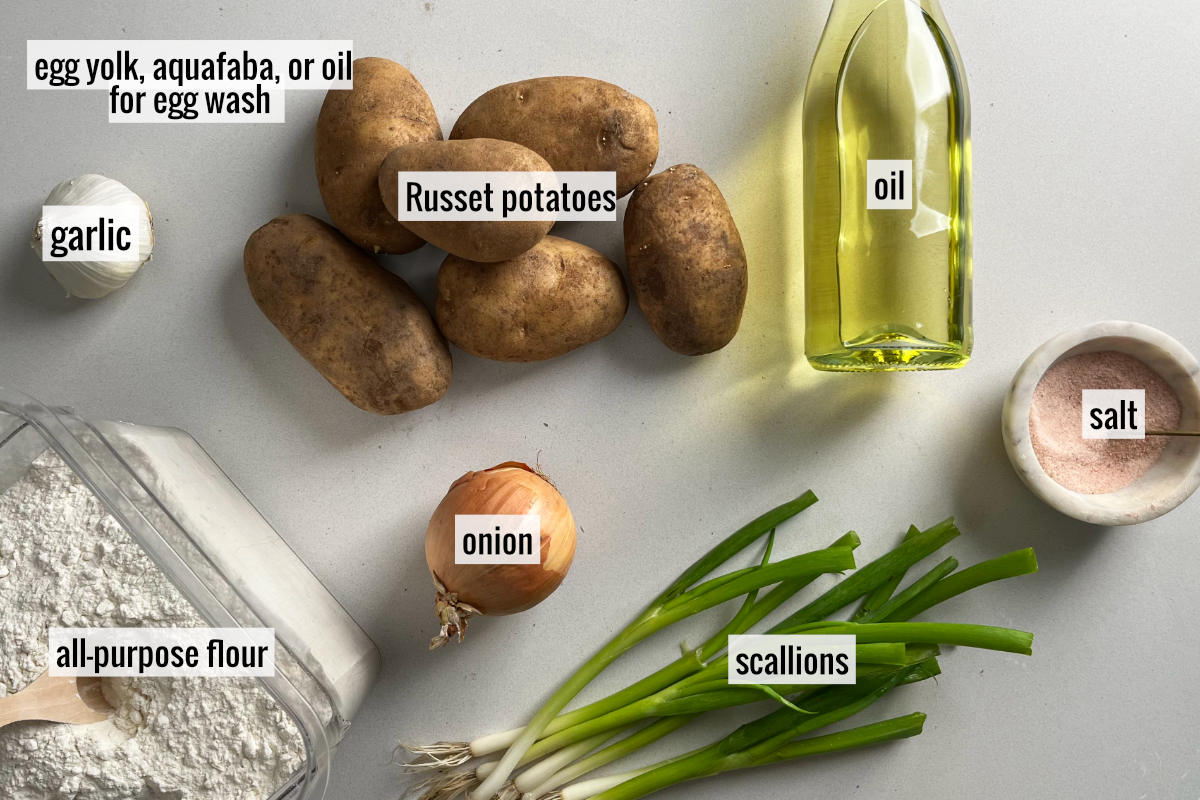
See the recipe card for full information on ingredients and quantities.
👩🍳How to Make This Recipe
The directions below separate each task: preparing the potatoes, making the flour dough, cooking the onions, and bringing it all together.
To be the most efficient, make and rest the dough and caramelize the onions while the potatoes roast in the oven. By then, your potatoes will be ready to break down and turn into your filling and finally bake the potato knishes.
Prepare the potatoes
Preheat your oven to 425°F. Take your potatoes, and poke them 6 times per potato with a fork. Then, lightly oil the potatoes and season them generously with sea salt.
Bake for ~1 hour until they are tender when prodded with a fork.
While the potatoes are still warm (as hot as you can handle), peel the skin off. As soon as they are peeled (and still warm), run them through a food mill to get a nice even mash.
Note: If you do not have a food mill, break them up with a wooden spoon into tiny pieces or mash them with a masher – try to get them as tiny as you have the patience for! The tinier, the better.
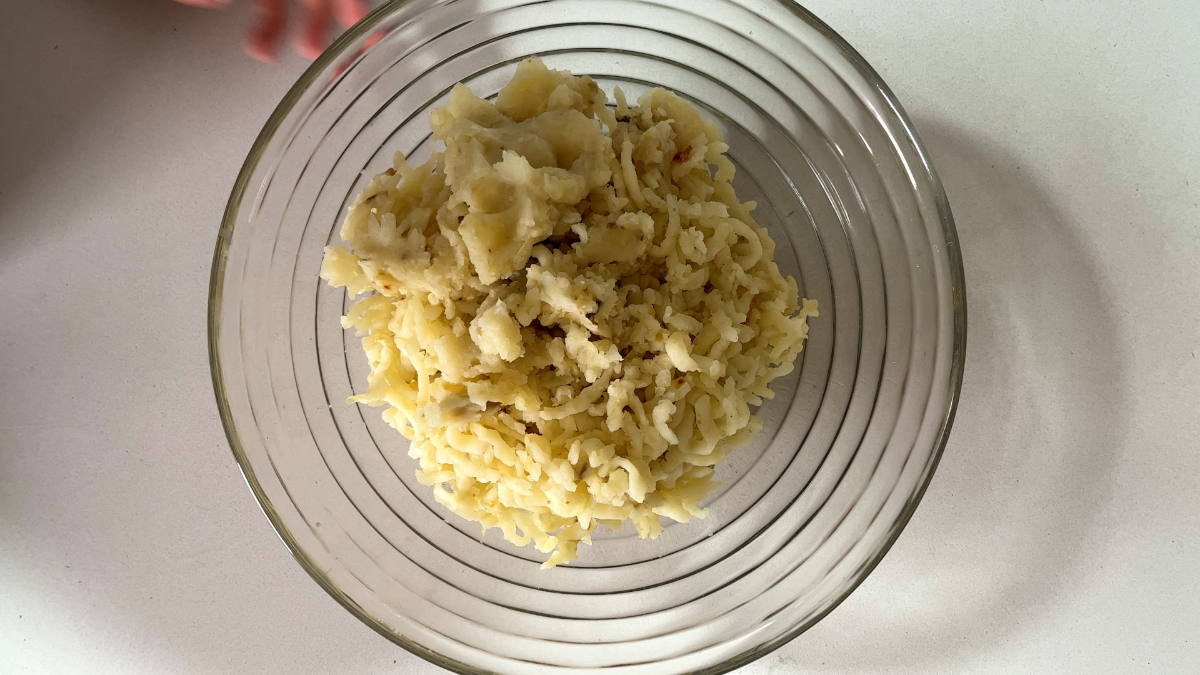
At this point, you can leave the potatoes to cool and come back to it later, or continue with the next step.
Make the flour dough
Combine your flour and a pinch of salt in your stand mixer bowl with the dough hook attachment. As an alternative, you can use a large bowl and use a hand mixer with the dough mixer attachments.
While running the mixer on the lowest setting, add 1⁄3 cup water and 2 teaspoons of oil until the dough forms a rough ball.
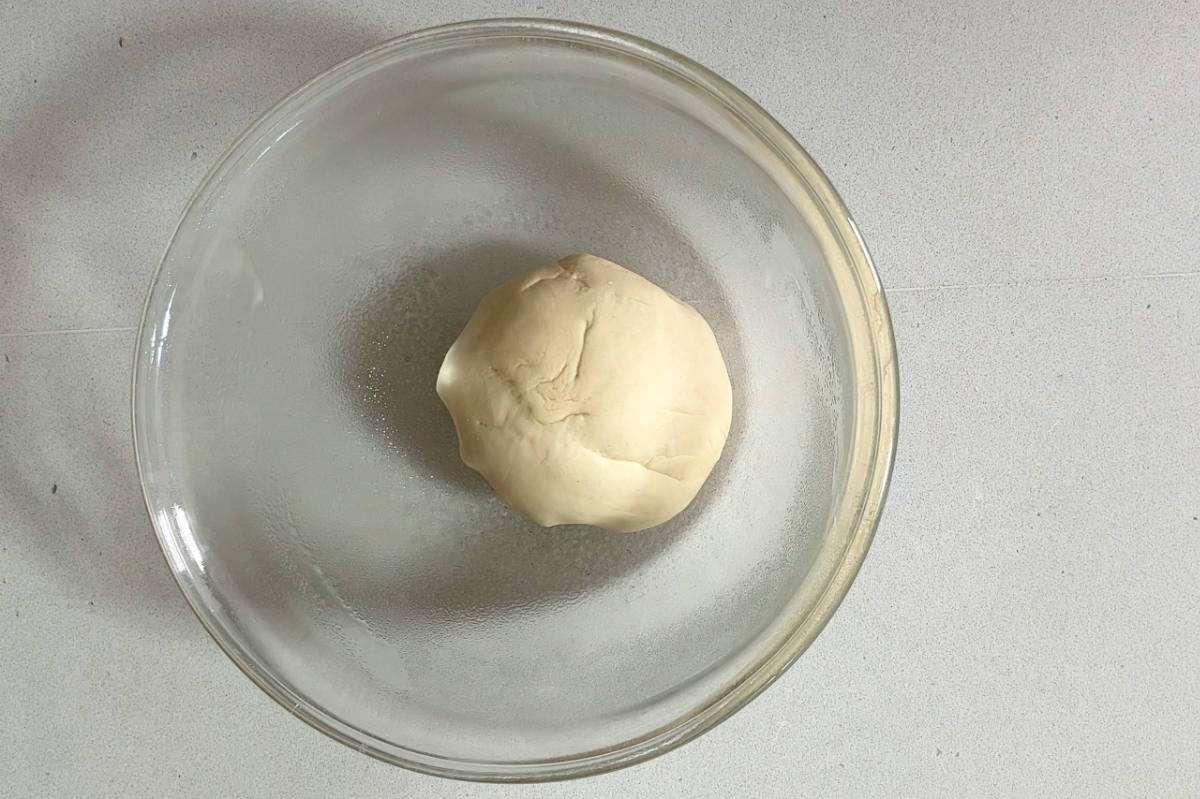
Turn the dough out onto a lightly floured surface and knead it until smooth by hand, which should take about 15 minutes.
Once the dough is nice and smooth, transfer it to a lightly oiled clean bowl, cover with plastic wrap or a silicone lid and leave it to rest for 30 minutes.
Make the onion filling
Next, heat ½ cup of oil in a large skillet over medium heat. Add the finely diced onions and scallion whites to the skillet and cook, often stirring, until they start to brown and caramelize. This takes about 20 minutes.
Then, add in the minced garlic and the rest of the scallions and cook for just one more minute. Transfer the whole thing to the bowl with the milled potatoes. Season to taste with salt and set the filling aside.
Note: Potato knishes are traditionally on the blander side. Seasoning with just salt is enough for some, but not others. I’ve provided some spice-addition ideas in case this is too boring for you.
Bring it all together
Preheat the oven to 375°F. Line a large baking sheet with a silicone baking mat or parchment paper and set it aside.
Divide the dough into 8 even pieces, then shape each one into a ball. Roll out one dough ball at a time on a lightly floured surface into a 7″ circle. Brush the surface of the dough with some of the remaining oil.
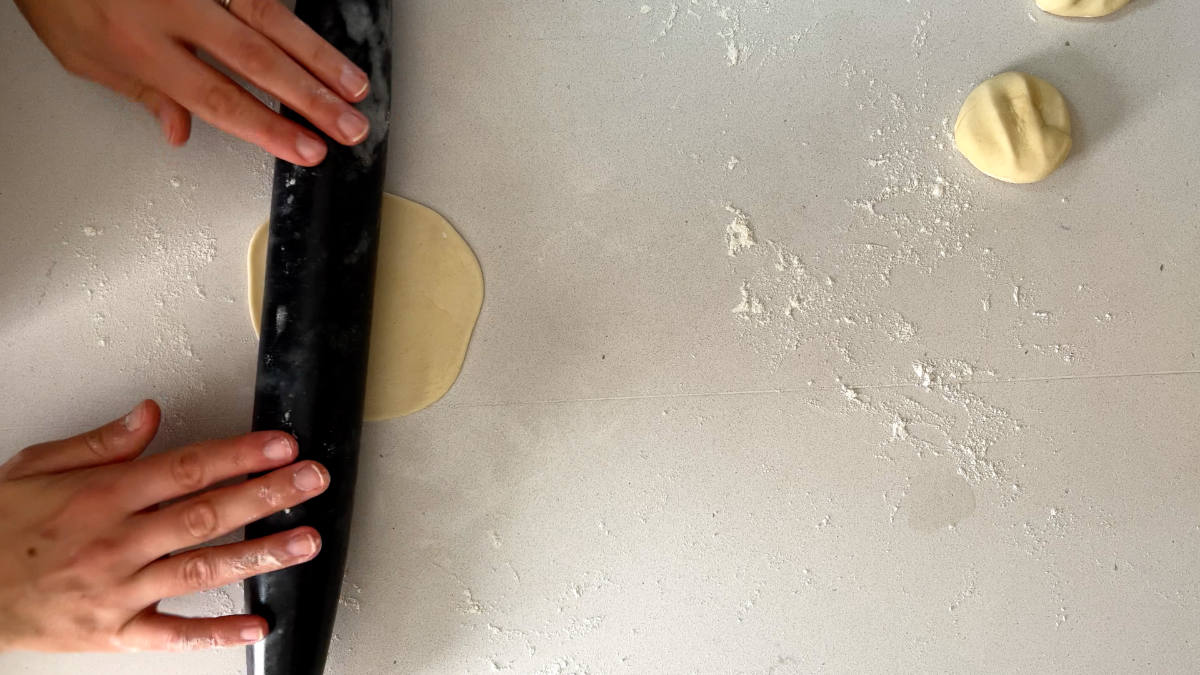
Mound about 1 cup of the potato filling in the center of the dough and fold the dough up and around the sides. Leave the top of the filling exposed. Overlap the edges of the dough to make a snug fit around the filling. It doesn’t have to be too neat!
Note: Make one knish at a time, keeping the remaining dough covered to prevent it from drying out.
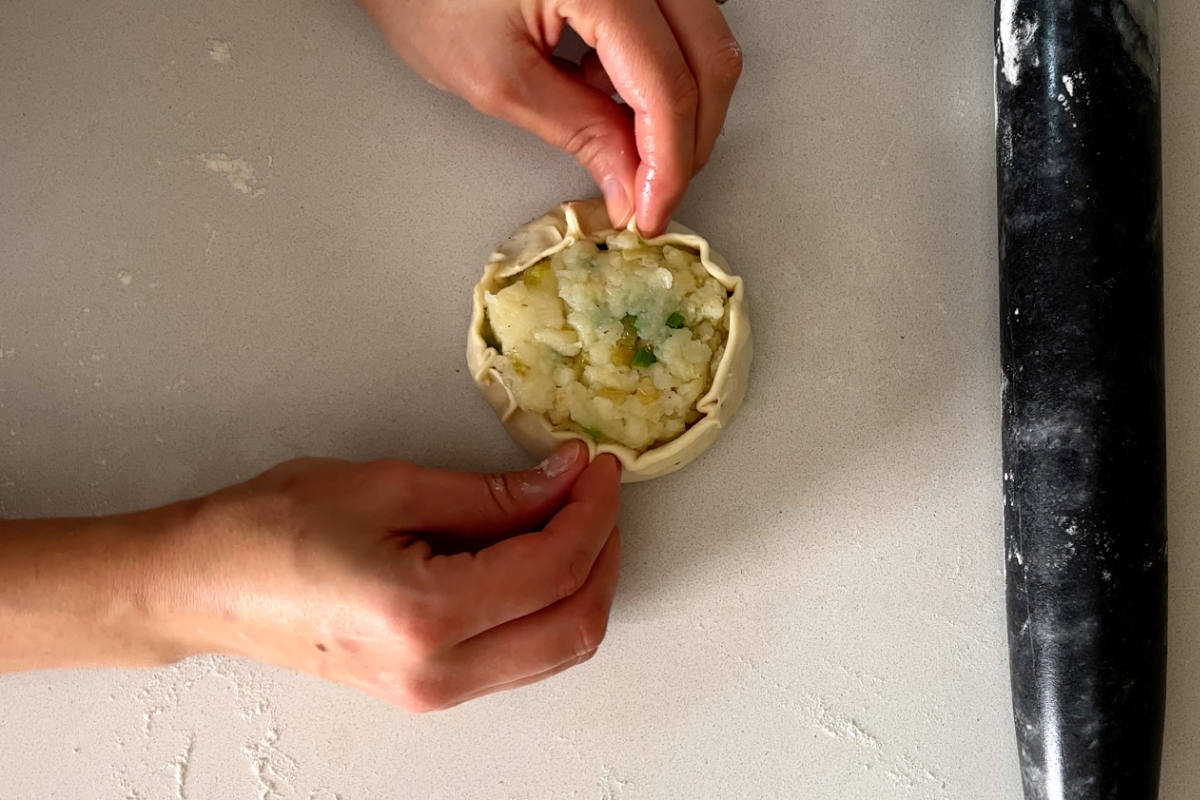
Transfer the knishes to your pre-prepared baking sheet, brush them with egg wash (the yolk and 1 tablespoon of water), and bake until lightly golden, about 30 minutes.
Reheating Pro Tip
Knishes reheat very well – just pop them in the oven for 15 minutes at 350°F to heat through.
Make it vegan
Brush with aquafaba or spray some oil instead of brushing with egg wash. Your kinsh dough will not brown as well as the egg yolk, but it will still be delicious!
Non-traditional spice additions
Try some of these spice additions to spruce up your knishes:
- 1.5 teaspoons of cayenne pepper + 1.5 teaspoons of paprika (or smoked paprika)
- 2 teaspoons of herbes de Provence
- 1-2 teaspoons of curry powder
- 2 teaspoons of rosemary and an extra pinch of garlic powder
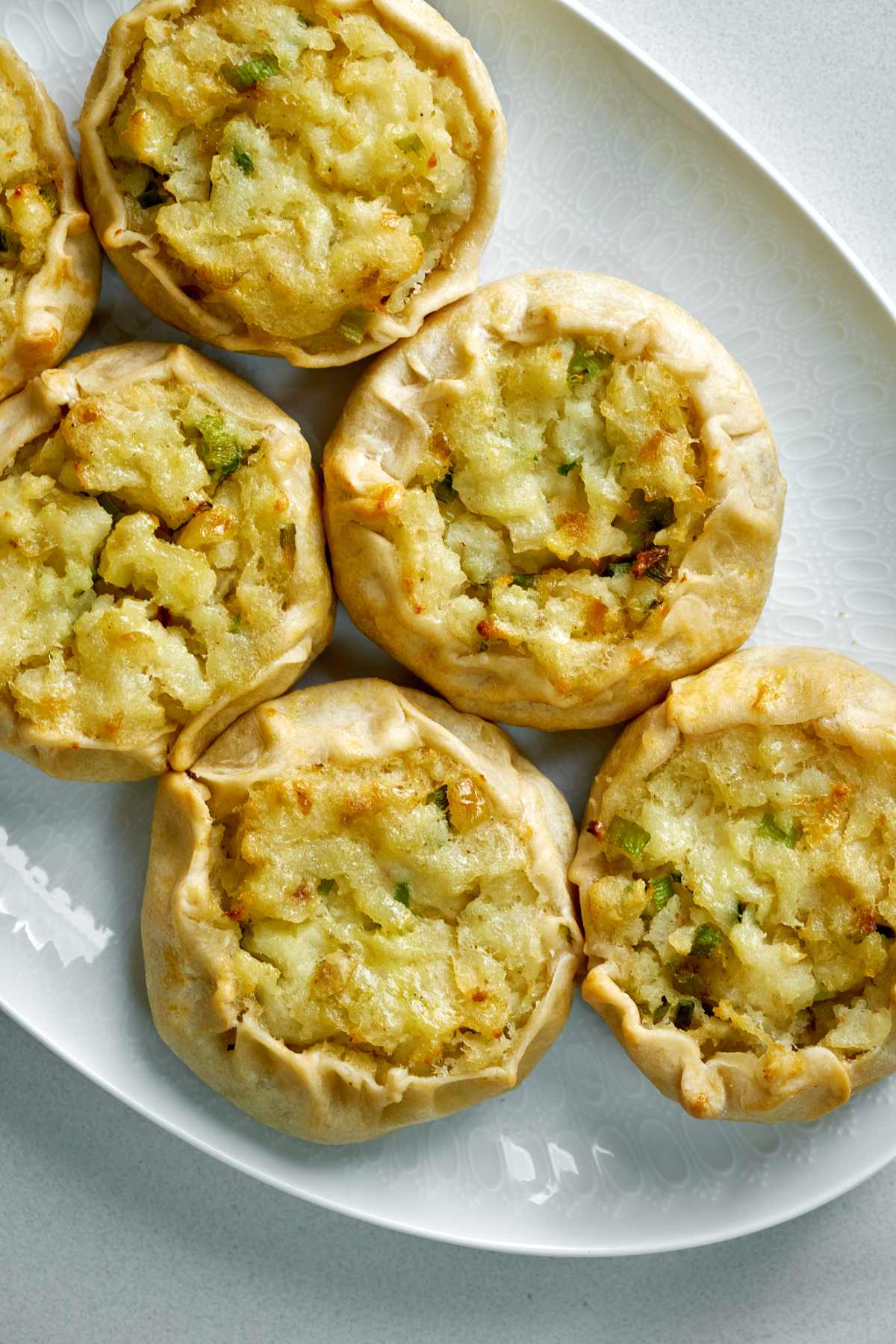
🥔 Related Recipes
Meet the Jewish recipes you need in your life – once you try them you’ll be in love!
I love hearing from you! You can also FOLLOW ME on INSTAGRAM, TIKTOK, and PINTEREST to see more delicious food and what I’m up to.
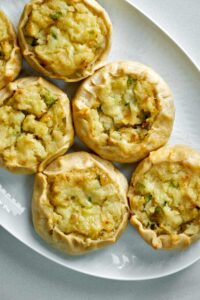
Equipment
- 1 Mixer (hand or stand) with dough attachment
Ingredients
- 1 cup all-purpose flour sifted
- ⅔ cup vegetable oil or canola
- 3 ibs Russet potatoes
- 1 yellow onion finely diced
- 1 bunch scallions finely sliced
- 2 cloves garlic minced
- 1 egg yolk see notes for vegan options**
- salt to taste, start with 1-2 teaspoons
Instructions
Prepare the potatoes
- Preheat oven to 425F.
- Poke the potatoes 6 times per potato with a fork. Lightly oil the potatoes and season them generously with sea salt.
- Bake for ~1 hour until fork tender.
- While the potatoes are still warm (as hot as you can handle), peel them. As soon as they are peeled (and still warm), run them through a food mill. If you do not have a food mill, break them up with a wooden spoon into tiny pieces or mash them.
- At this point, you can let the potato cool and come back to it later or continue.
Make the dough
- Combine flour and a pinch of salt to your mixer bowl with a dough hook (or a large bowl and use a hand mixer with dough attachment)
- While running on the lowest setting, add 1⁄3 cup water and 2 teaspoons of oil until the dough forms a rough ball.
- Turn dough out onto a lightly floured surface and knead until smooth, about 15 minutes.
- Transfer to a lightly oiled clean bowl, cover with plastic wrap or a silicone lid and let rest for 30 minutes.
Make the filling
- Heat ½ cup of oil in a large skillet over medium heat.
- Add the finely diced onions and scallion whites and cook, stirring often, until they start to brown, about 20 minutes.
- Add the minced garlic and the rest of the scallions and cook for just one more minute.
- Transfer to the bowl with the potatoes.
- Season to taste with salt and set the filling aside.
Bring it all together
- Preheat the oven to 375°F.
- Line a large baking sheet with parchment paper or a silicone baking sheet and set aside.
- Divide the dough into 8 pieces, then shape each into a ball.
- Roll out one dough ball at a time on a lightly floured surface into a 7" circle.
- Brush the surface of the dough with some of the remaining oil. Mound about 1 cup of the filling in the center of the dough and fold the dough up and around the sides. Leave the top of the filling exposed.
- Overlap the edges of the dough to make a snug fit around the filling.
- Transfer the knishes to the prepared baking sheet, brush them with egg wash (the yolk and 1 tbsp of water).
- Bake until lightly golden, about 30 minutes.
Notes
- 1.5 teaspoons of cayenne pepper + 1.5 teaspoons of paprika (or smoked paprika)
- 2 teaspoons of herbes de Provence
- 1-2 teaspoons of curry powder
- 2 teaspoons of rosemary and an extra pinch of garlic powder

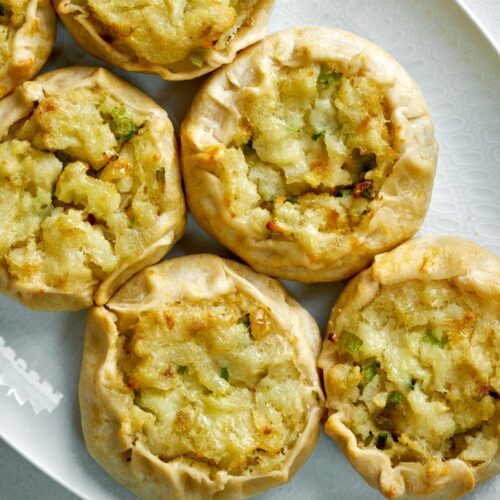
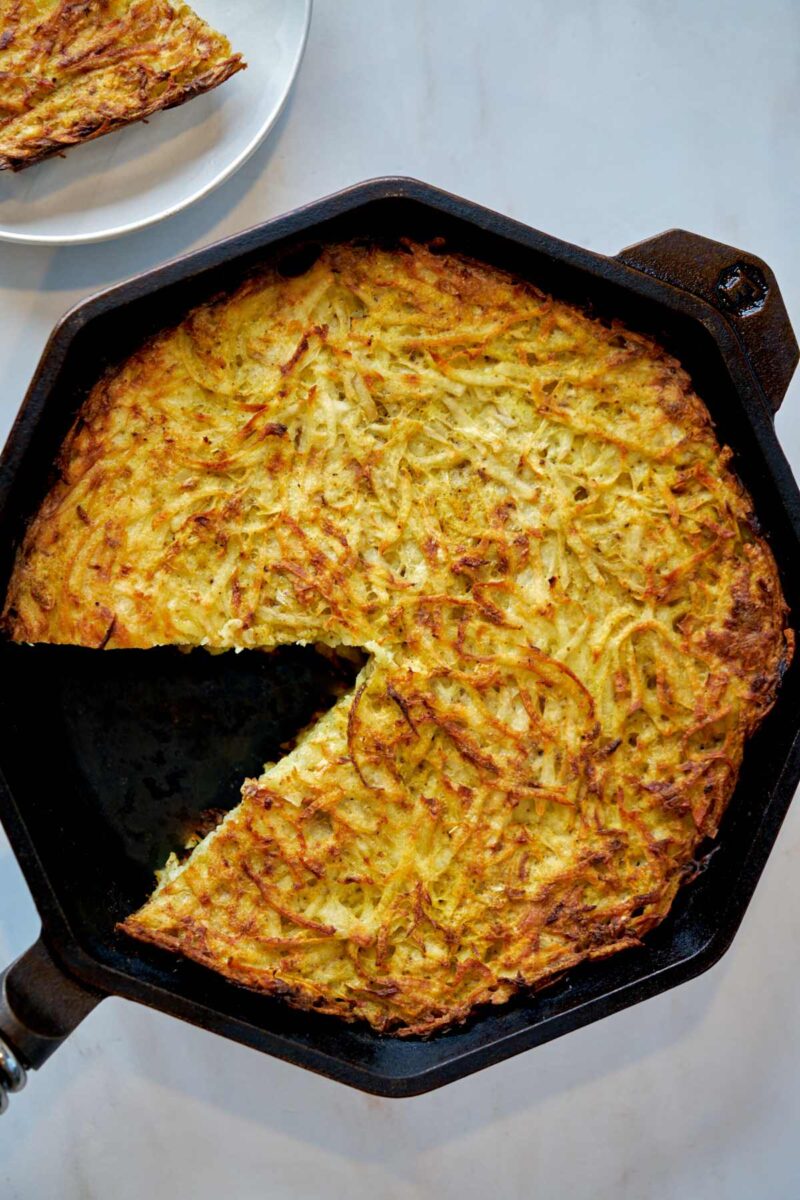
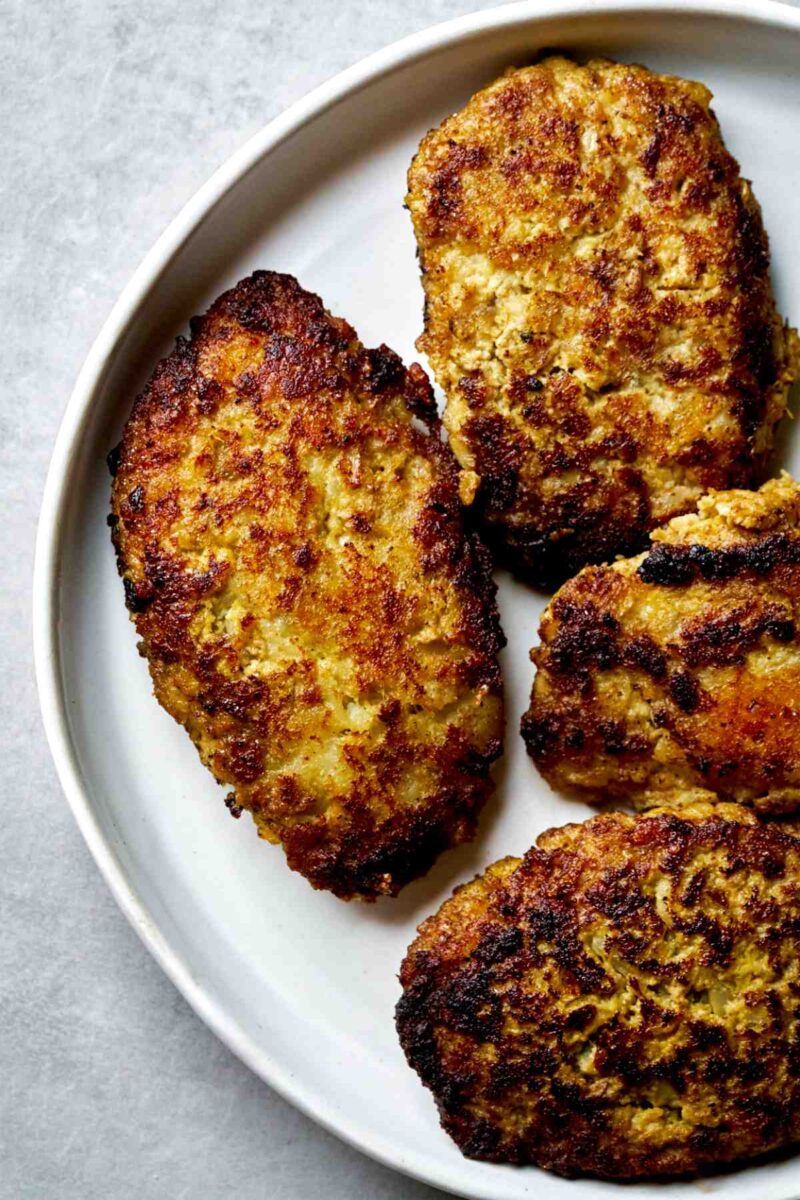
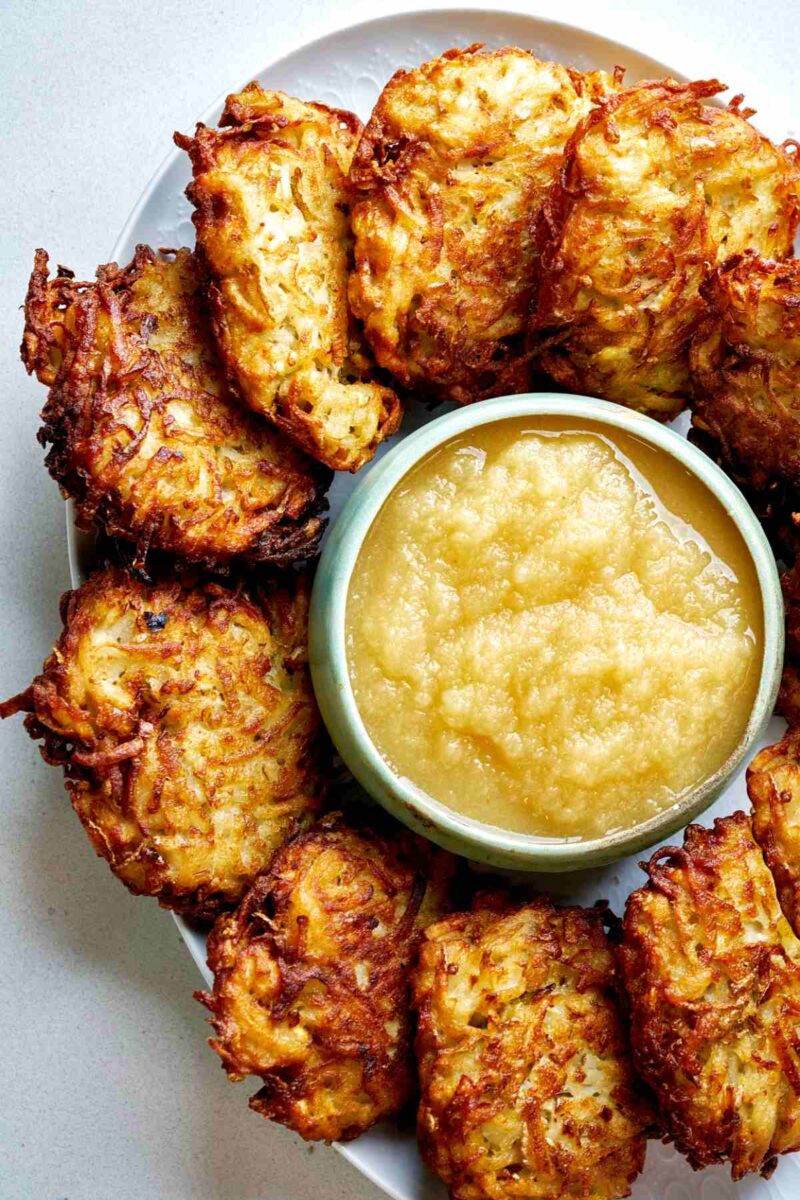
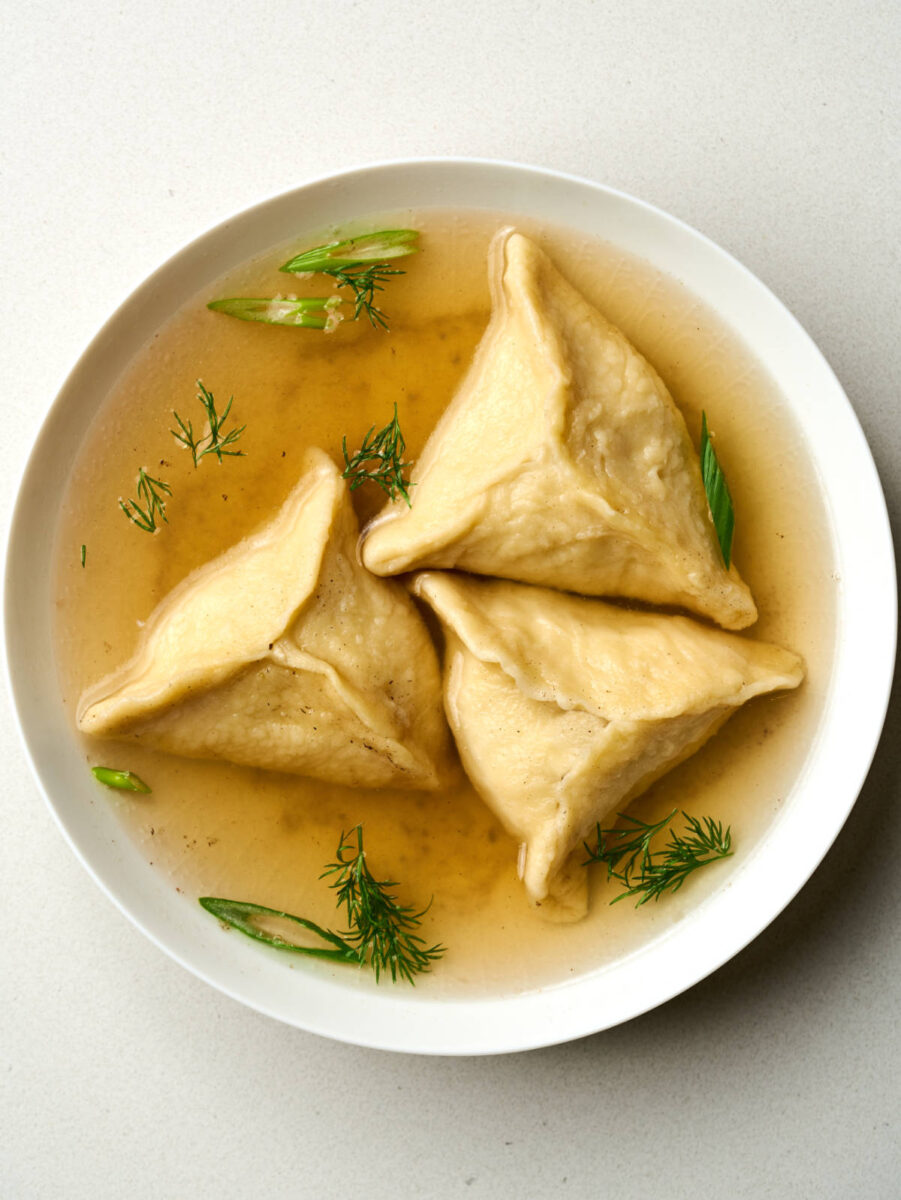
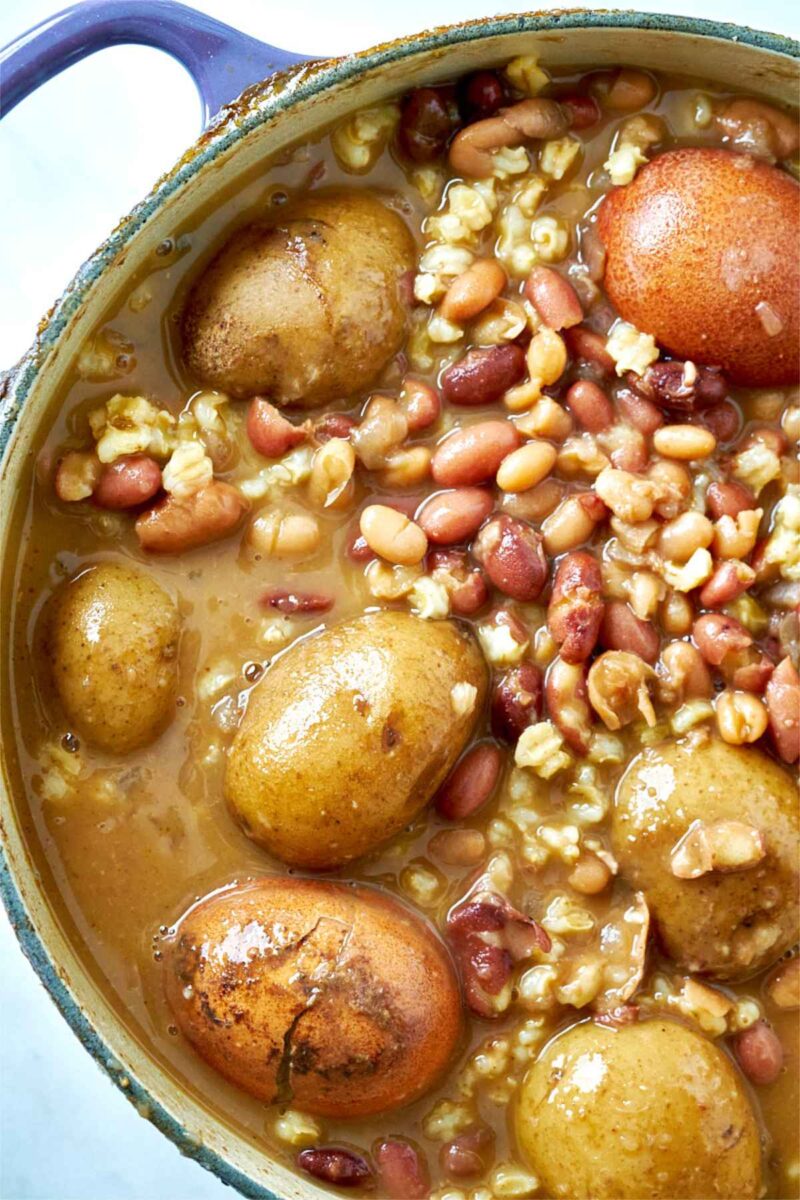
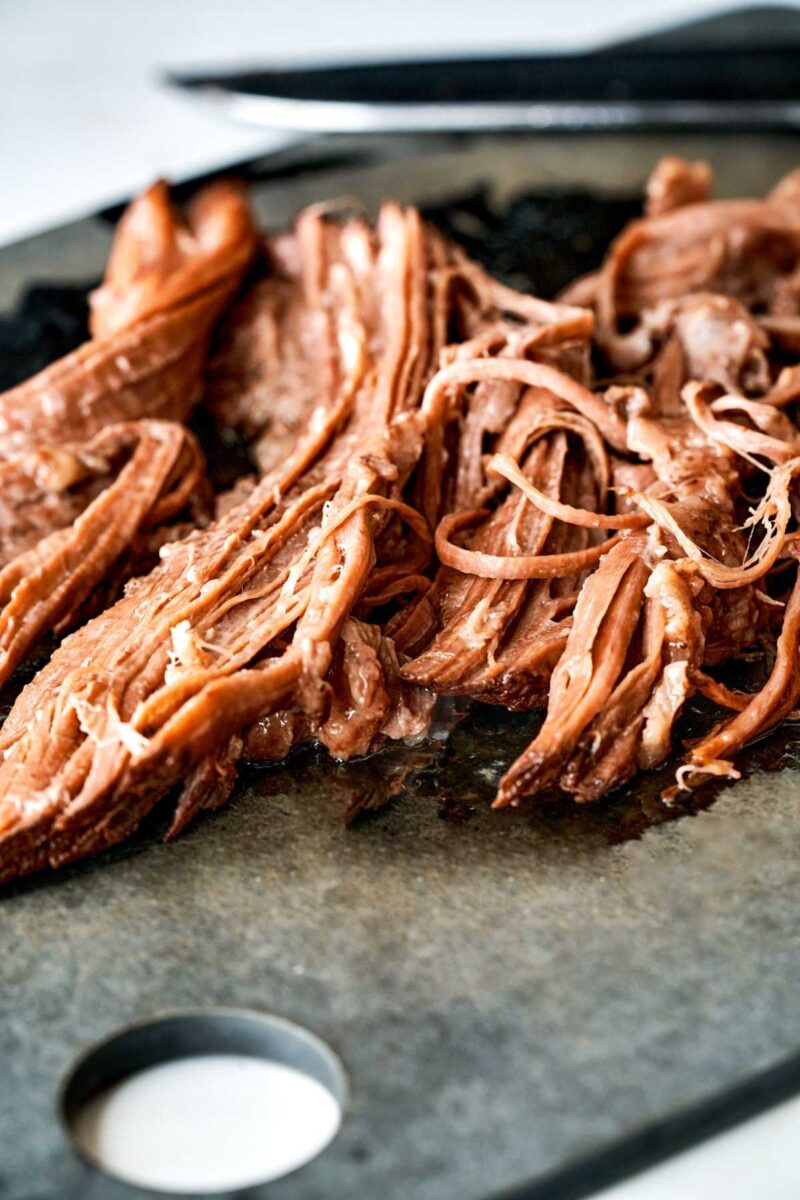
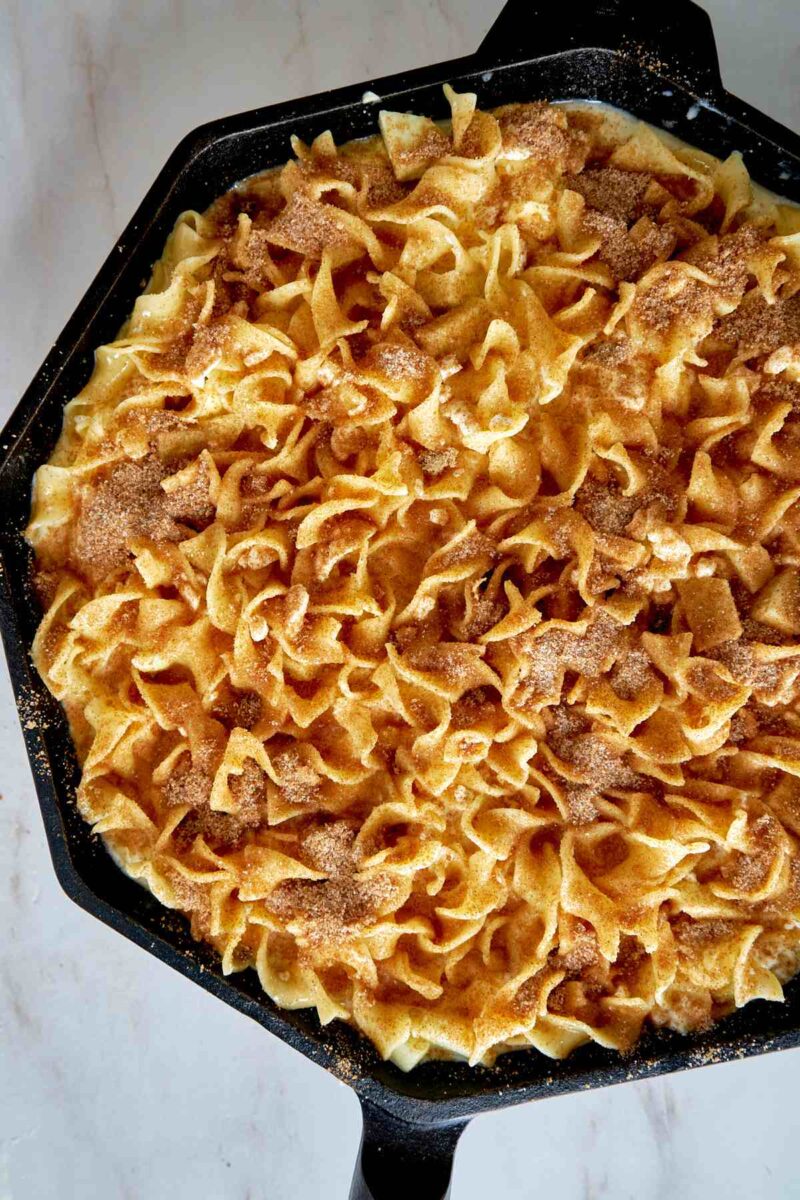
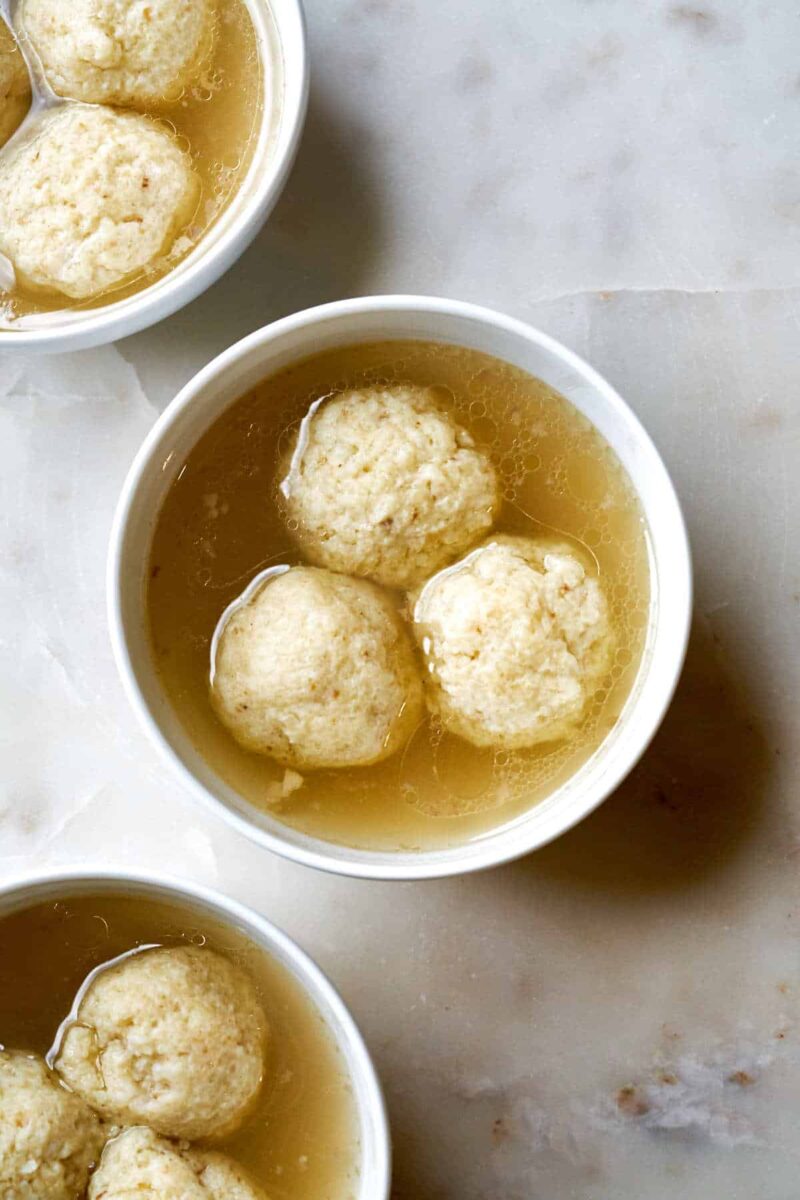
Smoked paprika with onion offers excellent results!
Is this accurate to say 1 CUP of the potato filling on a 7-inch circle of dough?? That’s an awful lot of filling for one knish, isn’t it?
Hi Susie, Yes, it is a lot of filling per knish… and 1 cup is correct! Take a look at the photos if that helps; the filling is not enclosed by the dough, just held up inside edges like a cheesecake or siu mai dumping.
How can the dough rise when there is no yeast?
Hi Dolly, you are right… the dough doesn’t rise, but instead rests to hydrate.